2022 has been a boom year for insurance brokers and natural gas providers if this section of the list is anything to go by, with Steadfast Group (ASX: SDF) and AGL Energy (ASX: AGL) rising seven and 13 positions respectively.
The former – still led by the stead hand of its founder who established the business in 1996 - continues to be bolstered by acquisitions, while the latter appears to have benefitted from intense public scrutiny, a board shake-up, and of course geopolitical factors that have put anyone with energy resources in the driver’s seat.
Investment giant AMP (ASX: AMP) also had a steady rise through the ranks of 10 spots, although to put this in context it held the same position in 2021.
31. Steadfast Group (SDF)
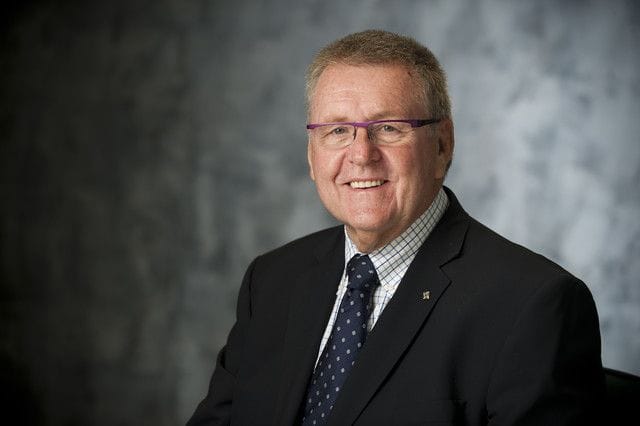
Insurance
2021 rank: 38
Market Cap: $5.5b
FY22 revenue: $911.4m
FY22 profit: $171.6m
Listed: 2013
CEO: Robert Kelly
CEO salary: $4.8m
From a position almost at the bottom of this list two years ago, Australia’s largest insurance broker network Steadfast Group (ASX: SDF) has stayed true to its name as it has steadily climbed up the ranks of Sydney’s Top Companies.
To date, financial performance, a penchant for acquisitions and leadership longevity have proven the most steadfast traits of the group, co-founded in 1996 by its CEO Robert Kelly who has been in the role ever since.
With 427 brokerages in its network as at 30 June – including 355 in Australia – the group was involved in transacting $11.1 billion in gross written premiums for its partners for FY22.
This represented 13.1 per cent growth, while the increase was quicker still for Steadfast’s underwriting agencies at close to 20 per cent.
In an age where technological choices and innovation can make be instrumental for long-term success, the group has also reported some $945 million of that GWP – or around 8.5 per cent – was transacted using the Steadfast Client Trading Platform (SCTP).
“During FY22 we launched auto-rating capability for Liability and Professional Indemnity products and added another four insurers on our Commercial Motor line,” Kelly said at the AGM in October.
“These developments contributed to an increase in the use of SCTP by our brokers for commercial lines of 45 per cent over the prior year.”
The group is out to compound the growth it has been experiencing following $552 million worth of acquisitions completed in FY22, the largest being the $411.5 million purchase of Coverforce in August 2021 which was funded by a mix of scrip offerings to the vendors and a capital raise.
Just three days after the anniversary of the Coverforce acquisition, Steadfast then finalised the $301 million purchase of Insurance Brands Australia (IBA).
There are hundreds of millions of dollars lined up for an ongoing acquisitions pipeline, and at the October AGM Kelly confirmed 15 term sheets had either been signed or issued for new deals, while the group had 55 other “trapped capital opportunities”.
32. AGL Energy (AGL)

Insurance
2021 rank: 38
Market Cap: $5.41b
FY22 revenue: $911.4m
FY22 profit: $171.6m
Listed: 2013
CEO: Robert Kelly
CEO salary: $4.8m
This time last year, AGL Energy (ASX: AGL) was on its way to a demerger of its business operations to create a clean energy company, AGL Australia, and a coal-fired power stations operator, Accel Energy.
Then entered Atlassian billionaire Mike Cannon-Brookes with a mission to transition the company to a green energy future faster than AGL had planned, and the landscape has completely changed for the power generation group.
Two failed AGL takeover bids earlier this year didn’t thwart Cannon-Brookes, who ended up with an 11.3 per cent stake in the company – and the firepower to exert his influence on the company.
Cannon-Brookes achieved a win at the recent AGM with a massive shake-up of the AGL board as he managed to get all four of his nominees elected. It was a coup considering his stake of about one in nine shares on issue has been supplemented by representation of almost half of AGL’s nine-member board.
This followed a changing of the guard at AGL with the resignations in May of chairman Peter Botten and CEO Graeme Hunt after the corporate raider spoiled the company’s chances of gaining shareholder support for the demerger championed by the previous board.
Existing AGL board member Patricia McKenzie replaced Botten as chairman while CFO Damien Nicks stepped in as interim CEO following Hunt’s departure in September.
The new board sets up AGL to refocus on its transition to becoming a renewable energy giant.
Since the new board took control of AGL, the company has announced plans to completely exit coal power generation by 2035 by binging forward plans to close its Loy Yang A power station in Victoria’s Latrobe Valley 10 years earlier than expected. The company’s Bayswater coal-fired power station in the Hunter Valley is also set for closure by 2033.
Among the most recent announcements from AGL since the board shake-up is the planned closure of the company’s Torrens Island gas-fired power station in 2026. AGL says the plans were already in train ahead of the board reshuffle, but the closure marks another step in AGL’s plans to increase its access to renewables.
The closure of the 800-megawatt South Australian facility is timed with the planned completion of the Project Energy Connect interconnector between South Australia and NSW. The new above-ground transmission network, which will also have a connection to north-west Victoria, has been designed to pass through renewable energy zones in three states to supply the energy grid.
A couple of failed takeovers and a renewed executive team has been good news for shareholders who have seen shares increase in value by more than 40 per cent over the past year.
The steady decline in the company’s shares since their peak in 2017 placed AGL close to the bottom of the top companies list last year. The upheaval of the past year, and a subsequent $1 billion-plus increase in market capitalisation, has pushed AGL into a higher ranking.
33. Harvey Norman Holdings (HVN)
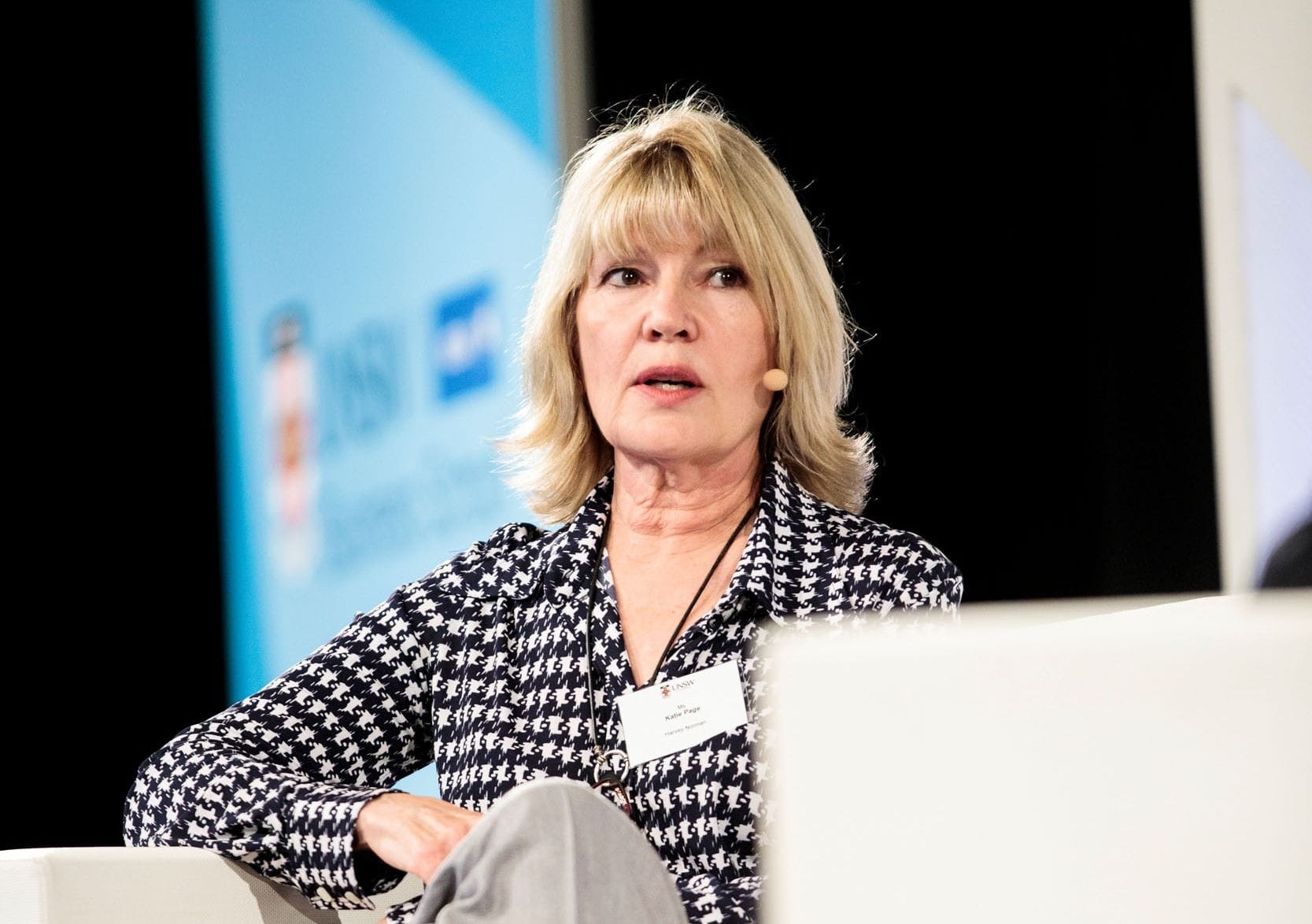
Retailing
2021 rank: 35
Market Cap: $5.38b
FY22 revenue: $2.81b
FY22 profit: $817.88m
Listed: 1987
CEO: Katie Page
CEO salary: $3.94m
While some of the shine came off consumer goods retailer Harvey Norman’s financial performance in FY22, thanks to the pandemic-led sugar hit that generated record sales a year earlier, Harvey Norman (ASX: HVN) continues to hold up well.
It’s a fitting result for Harvey Norman as 2022 is a cause for celebration, marking 40 years since chairman Gerry Harvey founded the business with Ian Norman, opening a single store in the Sydney suburb of Auburn.
CEO Katie Paige, Harvey’s wife, has been with the business for almost the entire journey after being employed by the partners six months after they opened at Auburn.
Now aged 83, Gerry Harvey is as enthusiastic as ever to grow the business which has 195 Australian stores and 109 company-operated stores in eight international markets.
The Australian operations operate under the Harvey Norman, Domayne, and Joyce Mayne brands, but overseas it is purely branded Harvey Norman.
Shareholders at the company’s AGM in November were told of plans to ramp up Harvey Norman’s presence in Malaysia, growing its 28-store network to 80 by 2028. The company has already doubled its store count in the country over the past five years, with the brand benefitting from a faster-growing population than Australia and a booming post-COVID economy.
The company pushed ahead with its international expansion even during the pandemic, which is now starting to pay dividends. Harvey Norman’s offshore company-operated stores currently represent 25 per cent of total consolidated profit before tax.
The company revealed at the AGM that aggregated sales across the group for the 12 months to the end of October rose 6.9 per cent. That’s despite a weaker Australian-dollar exchange rate in its international markets and big falls in the company’s Northern Ireland operations.
For now, Harvey Norman appears to be defying analysts’ predictions of a pullback in retail spending due to persistent interest rate increases in Australia and overseas.
However, the company recently faced the indignity of legal action by the Australian Securities and Investments Commission over its interest-free offer to customers which has been a mainstay of the company’s business for years.
ASIC is targeting Harvey Norman’s ‘no deposit’ and ‘interest-free’ payment offer to customers on purchases between January 2020 and August 2021, which was a time that saw sales surge amid the work-from-home boom.
The legal action includes credit-card partner Latitude Finance Australia, part of Latitude Finance Group (ASX: LFS), with the regulator alleging that advertisements promoting the offer were misleading as they didn’t disclose that interest-free payments were only possible if customers applied for a Latitude GO Mastercard.
34. Evolution Mining (EVN)

Metals & Mining
2021 rank: 32
Market Cap: $5.28b
FY22 revenue: $2.06b
FY22 profit: $323.32m
Listed: 2002
Executive Chairman: Jake Klein
CEO salary: $3.09m
The collapse of crypto exchange FTX, and the subsequent downturn in cryptocurrencies, has been hailed by many Australian gold miners as affirmation that gold is the true safe haven asset during turbulent times.
But despite its traditional role as a hedge against inflation, the price of the precious metal is down from highs above US$2,000 an ounce reached in March this year to be about level with the same time last year – around US$1,700 an ounce.
The same can’t be said for Evolution Mining (ASX: EVN), Australia’s third-largest gold miner, which has seen its market capitalisation slip by about $1.8 billion in the past 12 months.
Although its fortunes have improved since the collapse of FTX, Evolution has faced a tough 12 months as the price of gold has been suppressed by a strong US dollar due to the aggressive monetary policy tightening by the US Federal Reserve.
Evolution chairman and company founder Jake Klein told shareholders at the recent AGM that this headwind has been accompanied by rising production costs for the miner due to higher inflation.
“Looking forward though, the outlook for gold is stronger with the Fed expected to ease interest rate increases within 12 months as inflation reduces and the global economy is expected to slow significantly,” says Klein.
“The recent developments in the crypto space, with significant losses incurred by investors in FTX and other crypto assets, have also reinforced gold’s worth as a superior storer of value.”
Evolution Mining, which has operations in Australia and Canada, is a relatively low-cost producer of gold. The company produced 640,275 ounces of gold in FY22 at an average cost of US$914 per ounce, which the company says is in the lowest quartile of global gold producers. But the issue for the company is that this was the fifth year in a row that gold production had fallen.
During the year, the company completed the $1 billion acquisition of the Ernest Henry mine from Glencore which Klein says delivered Evolution Mining a substantial increase in cash flow and helped further lower its cost base per ounce.
In a significant move by the company, the load at the top is finally being shared at Evolution Mining. CFO Lawrie Conway was appointed CEO, a role that has never existed at Evolution Mining since it was founded in 2011. Klein has always led the company as executive chairman.
The move is seen by many as an acknowledgement of the need for improved leadership accountability and the need for Evolution to lift its game.
Klein will remain executive chairman at least until the end of 2024 and work alongside Conway to drive positive change for the company.
“The creation of this role will allow us to continue to deliver on both Evolution’s strategic ambitions and operational performance and establishes the organisational structure for the next chapter of growth and development,” says Klein.
35. Lendlease Group (LLC)
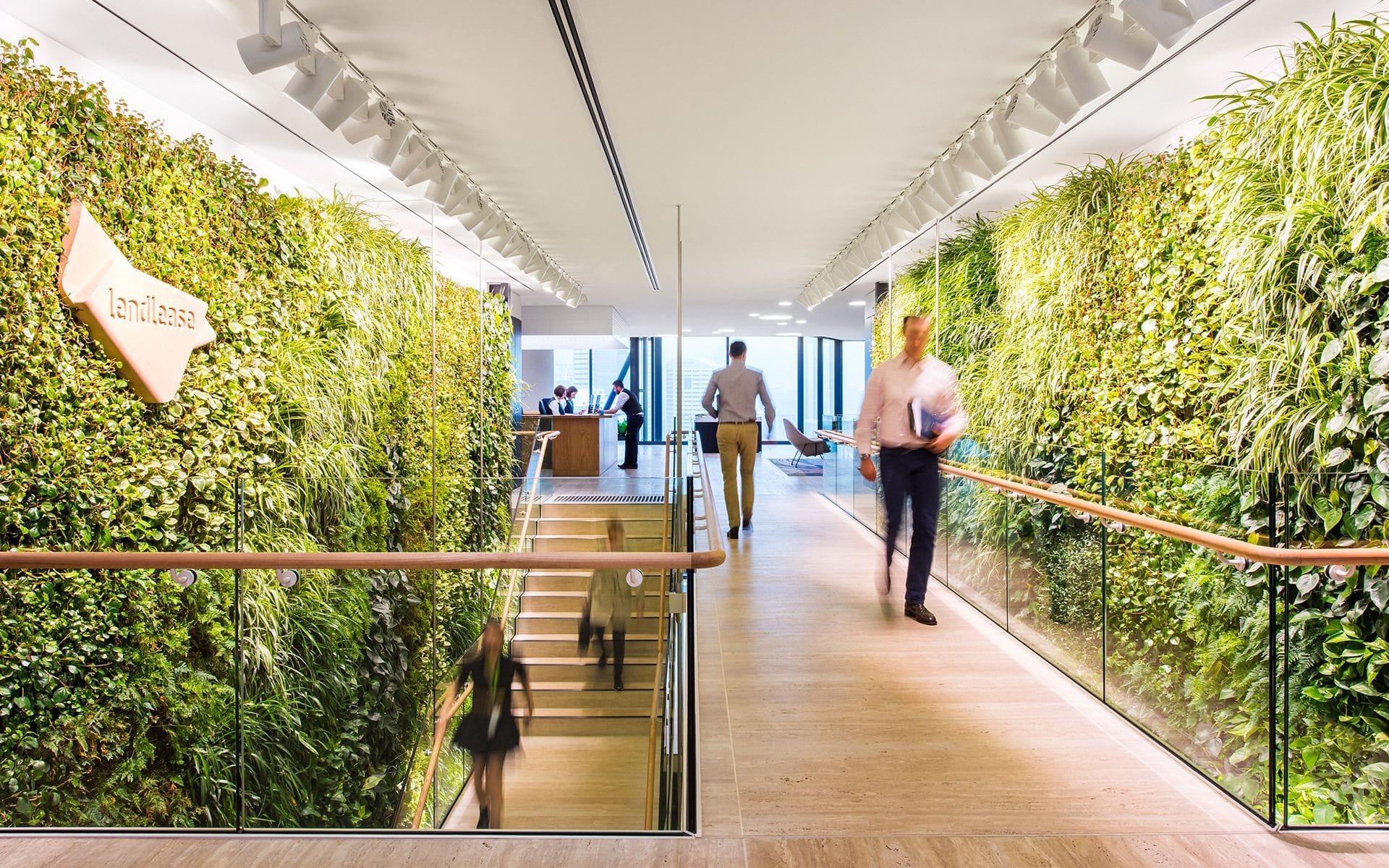
Real Estate
2021 rank: 28
Market Cap: $5.17b
FY22 revenue: $8.82b
FY22 loss: $99m
Listed: 1962
CEO: Tony Lombardo
CEO salary: $3.83m
Lendlease Group (ASX: LLC) has been in reset mode over the past year as the global development giant looks to shake off legacies of the past to focus on a simpler, lower-cost operating model.
But despite economic slowdown filtering through some of its key markets, such as the UK and US, Lendlease has affirmed its affiliation for massive development projects with the cornerstone of its growth strategy being to create urban precincts in targeted global gateway cities.
Lendlease has a $117 billion development pipeline – a figure that has grown from just $11 billion in 2009. The company’s ‘communities’ pipeline of residential projects in Australia currently stands at $15.4 billion.
Its portfolio of 21 major urban projects spans nine gateway cities around the world. These include Barangaroo South in Sydney, Lakeshore East in Chicago, the Paya Lebar Quarter in Singapore and the International Quarter London.
And although the inner-urban landscape has been under threat over the past two years, at one point emptied of workers and residents looking for an escape from the pandemic, Lendlease is confident the once dead hearts of cities are finally in recovery.
“History is marked with significant periodic plagues and pandemics, of which COVID is the most recent,” says the company in its annual report. “Despite these and other challenges, including natural disasters and economic cycles, cities continue to rebound.”
Lendlease is also confident that the pre-eminence of cities has not been undermined by ‘successive waves of technology’, arguing that this has not usurped the human need for close and personal interaction. Lendlease affirms that its gateway cities strategy is ‘founded on the premise that the most desirable cities will continue to be the driving force of economic, social and cultural life’.
Lendlease is on track to achieve its $8 billion annual project completion target from FY24, which will be almost double the company’s historical average.
The company is aiming for annual project completions at this level every year and it is choosing to strike strategic partnerships on some projects to achieve it.
CEO Tony Lombardo has declared significant progress has been made in resetting the company for future growth.
“We are now a leaner organisation and more agile in responding to our customers,” he says.
After posting a bottom-line loss of $99 million in FY22, investors will be hoping he is on the money.
36. Altium (ALU)

Software & Services
2021 rank: 41
Market Cap: $5.08b
FY22 revenue: US$220.8m
FY22 profit: US$55.5m
Listed: 1999
CEO: Aram Mirkazemi
CEO salary: US$994,108
Like many software-based design platforms before it, circuit board design facilitator Altium (ASX: ALU) made a major push to get customers onto a subscription service this year, transforming its revenue base in the process.
After rejecting a takeover offer from US software giant Autodesk in 2021, Altium determined it would focus on its ‘365’ program, which it claims will ‘transform the very nature of manufacturing electronics’.
This program is essentially a cloud-based version of its popular circuit board design software, which Altium says it sells to virtually every country in the world.
As a result, management believes it is now a ‘genuinely global corporation’ - not bad for a company which was founded in Hobart in 1985 before relocating to Sydney, and is now one of the largest service providers in its space.
When announcing its FY22 results, Altium said it ‘outperformed all expectations’, with revenue growing by 23 per cent to hit $321 million in the period.
Of that revenue, 75 per cent is recurring thanks to ‘strong adoption’ of Altium 365 which had 24,700 users at the end of the financial year, up from 19,700 the prior corresponding period.
“Our cloud platform Altium 365 remains well ahead of our competitors with adoption growing strongly,” Altium president Sergey Kostinsky said following the release of the company’s financial results.
“We now have 23 per cent of Altium Designer subscribers who have fully adopted Altium 365 with 30 per cent more in the process of adopting it.
“We are accelerating our transformative agenda for the global electronics industry where we aim to bring the business of engineering onto Altium 365 from design to supply chain and manufacturing.”
Altium also appointed former CFO Richard Leon as interim CFO following the planned departure of Martin Ive at the end of February.
Leon was Altium CFO from 2008 to 2015, recently served as CFO of ASX-listed Infomedia (ASX: IFM), and retuned to the software company in October 2021 as SVP external affairs and corporate development.
37. Qube Holdings (QUB)
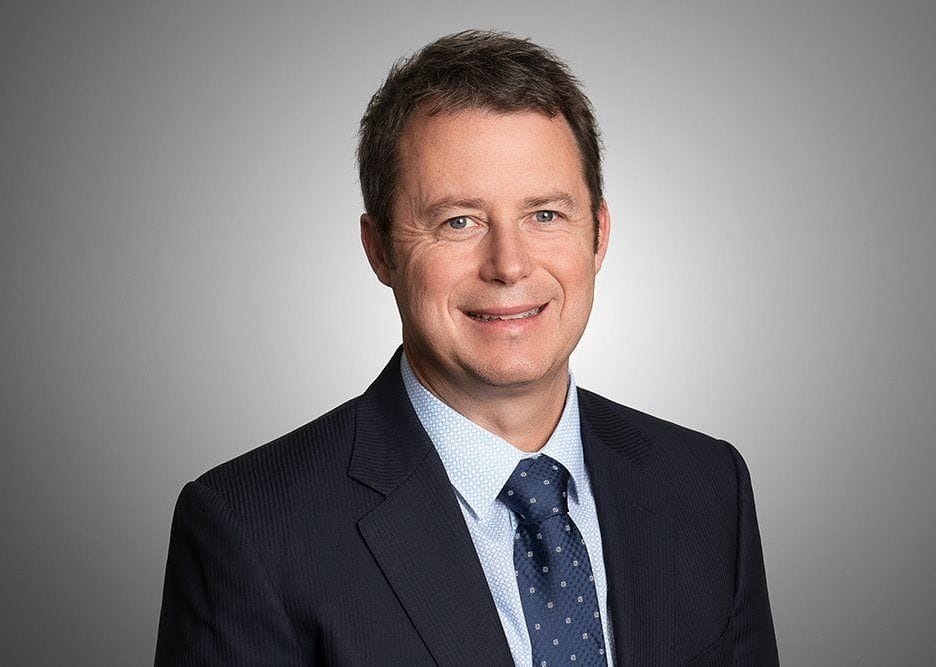
Transportation
2021 rank: 33
Market Cap: $4.96b
FY22 revenue: $2.5b
FY22 profit: $127.5m
Listed: 2007
CEO: Paul Digney
CEO salary: $3.15m
Port operator and logistics company Qube Holdings (ASX: QUB) has been able to capitalise on soaring global commodities demand in 2022, reaping the rewards of its acquisition of Newcastle Agri Terminal (NAT) last year amidst a bumper crop for wheat.
With 50 per cent ownership of Australia’s leading container terminal operator Patrick Terminals, Qube has a presence in 160 sites including 70 ports, notching an annual throughput of 270 million tonnes worth of products.
It is both a capital- and labour-intensive company with more than $2 billion spent in FY22, although the higher volume and operational efficiencies – for example performance improvements from the Port Botany Automated Rail Terminal – led to a 39 per cent spike in profit.
Management expects an alleviation of ongoing capex requirements due to what is arguably the group’s biggest milestone of the last 12 months – the $1.67 billion sale of the warehousing and property components of the Moorebank Logistics Park (MLP).
In its annual report Qube claimed MLP had delivered a “large profit” that was crystallised by the monetisation of the transaction in December 2021, resulting in an estimated tax payable of $190-200 million in December 2022.
The sale appears to have marked an inflection point for longstanding CFO Paul Lewis, who after 15 years with Qube announced his departure within a week of the monetisation.
The executive had been with the group since its much more modest beginnings as a $200 million infrastructure fund in 2007. Filling his well-worn shoes since June has been Mark Wratten, who previously worked with Aristocrat Leisure (ASX: ALL) and Vocus Group (ASX: VOC).
The transaction also gave Qube sufficient funding to run a $400 million share buy-back capital management initiative in May 2022.
“In FY22, the strength across most of our core markets including containers, grain, steel, most mining bulk commodities, energy and general cargo enabled Qube to deliver strong earnings growth despite weakness in certain markets and continued cost and operational impacts from COVID-19,” CEO Paul Digney said in the group’s full-year results announcement.
38. Challenger (CGF)

Diversified Financials
2021 rank: 42
Market Cap: $4.93b
FY22 revenue: $1.86b
FY22 profit: $253.7m
Listed: 2003
CEO: Nick Hamilton
CEO salary: $3.63m
Since 1985 Challenger (ASX: CGF) has been giving retirees certainty of income by providing consistent annuities, but what that means for its own bottom line depends on performance within a far-from-certain investing environment.
In a year of great leadership transition, Challenger reported positive underlying growth on numerous metrics in FY22 but a 57 per cent plunge in statutory profit was hard to ignore.
The company attributed this difference largely to investment markets impacting the fair value of Challenger Life Company’s (CLC) assets and liabilities.
Assets under management also dropped from $110 billion to $98.5 billion over the 12 months, while another relatively new division – the group’s foray into banking - came undone with an $11 million loss.
The bank, formerly known as MyLifeMyFinance Limited, was acquired from Catholic Super in July 2021 following approval from the Federal Treasurer for a deal struck in December 2020.
“In June 2022, MyLifeMyFinance was rebranded to Challenger Bank Limited (Bank), leveraging Challenger’s position as a leader in retirement and pre-retirement incomes,” the company noted in its annual report.
“Since announcing the Bank acquisition in December 2020, market conditions have changed and it is becoming apparent the Bank is unlikely to realise the expected benefits in the timeframe anticipated.
“As a result, Challenger is reviewing the Bank’s position within the Group and has commenced a strategic review of the business.”
This ultimately led to the $36 million sale of the bank to New Zealand’s Heartland Group in October, which Challenger CEO Nick Hamilton said would allow the company to focus on its life and funds management businesses.
Hamilton was recruited internally to replace Challenger veteran Richard Howes at the start of this year, having previously led the group’s Funds Management business since 2019.
He has had to contend with not only volatile asset and equity markets, but also the departures of chair Peter Polson and chief financial officer Rachel Grimes, replaced by Duncan West and Alex Bell respectively.
Despite the leadership shake-ups and market challenges, Hamilton has been looking at the bright side, including record Life and annuity sales.
“Clearly, the macro-economic environment presents both challenges and opportunities with rising interest rates benefiting annuity sales and margins but markets triggering an unrealised investment experience,” the new CEO said in the annual report.
“A new customer division has been formed to support this ambition, bringing together skills and expertise from across the group. This approach puts the customer at the centre of our business, reflecting our plans to broaden our customer reach and play a more meaningful role in their lives.”
At his first AGM as CEO in October, Hamilton highlighted the importance of strategic partnerships to drive growth, noting Challenger was working with a number of superannuation funds in developing long-term retirement income solutions for their members.
“Today, there is around $3 trillion in super accounts of members aged over 65,” he said.
“And intergenerational wealth transfer will push it to record levels, with $175 billion expected to transfer each year by 2040.
“And in Funds Management, rising demand for differentiated investment strategies and contemporary products presents good opportunities for our active management platform.”
39. AMP (AMP)
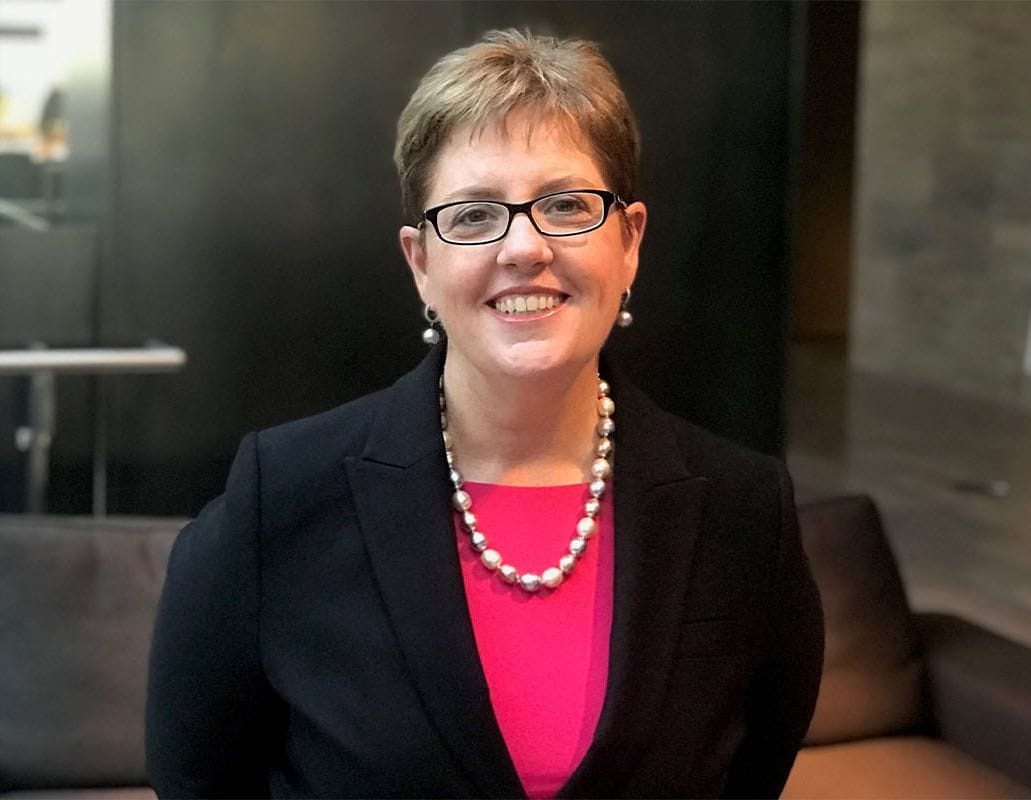
Financials
2021 rank: 49
Market Cap: $4.22b
1H22 revenue (operates on a calendar year): $1.11b
1H22 profit (operates on a calendar year): $481.0m
Listed: 1998
CEO: Alexis George
CEO salary: $2.93m
Australian investment giant AMP (ASX: AMP) has been steering its business on a narrower track in recent years, turning its attention to its key operations of banking and wealth management.
While wealth management didn’t perform so well last financial year, thanks to negative market returns, AMP Bank proved to be a shining light following a $600 million boost in the bank’s loan book and a $700 million lift in deposits over the September quarter amid a challenging environment for the banking industry.
That was good news in an otherwise uncertain year for AMP which earlier this year announced the demerger of its Collimate Capital subsidiary, formerly known as AMP Capital, followed by a planned ASX listing for the spin-off.
However, the group quickly changed tack and opted for a $1.1 billion trade sale instead after approaches from several parties, including Dexus Property Group (ASX: DXS), for the business which has about $44 billion in assets under management.
Dexus is acquiring Collimate’s domestic infrastructure equity and real estate business, which has about $24 billion in assets under management, for $430 million. The division’s international infrastructure equity business is being sold to DigitalBridge Group, Inc. for up to $699 million.
While the deal was poised to settle by the end of November, AMP recently announced a delay while the transaction awaits international regulatory approvals.
The Collimate Capital sale is aimed at ‘right-sizing’ AMP’s operating model for what the group plans to make the business more agile and efficient. The group says it will continue to review its portfolio of assets to ensure AMP is the right owner.
In an update at the UBS Australasia Conference in November, AMP highlighted the strength of its banking division which it says is a ‘competitive, digital-focused challenger bank’ that targets residential mortgages, deposits and transactional banking.
“Our bank continues to grow above system with both the loan and deposit books increasing in a competitive market,” says CEO Alexis George. “As homeowners begin to feel the impact of interest rate rises, our focus remains on supporting customers with competitive home loan and deposit rates and maintaining our high quality credit position.”
AMP Bank has shown a willingness to team up with new digital opportunities following a partnership with Sydney-based fractional property ownership platform Bricklet in November.
The startup shared-equity platform gives property buyers without a deposit a leg-up into the market and under the agreement AMP Bank will provide loans to owner occupiers who have secured their deposit through Bricklet. AMP Bank is the first bank to sign up to the platform.
40. Metcash (MTS)
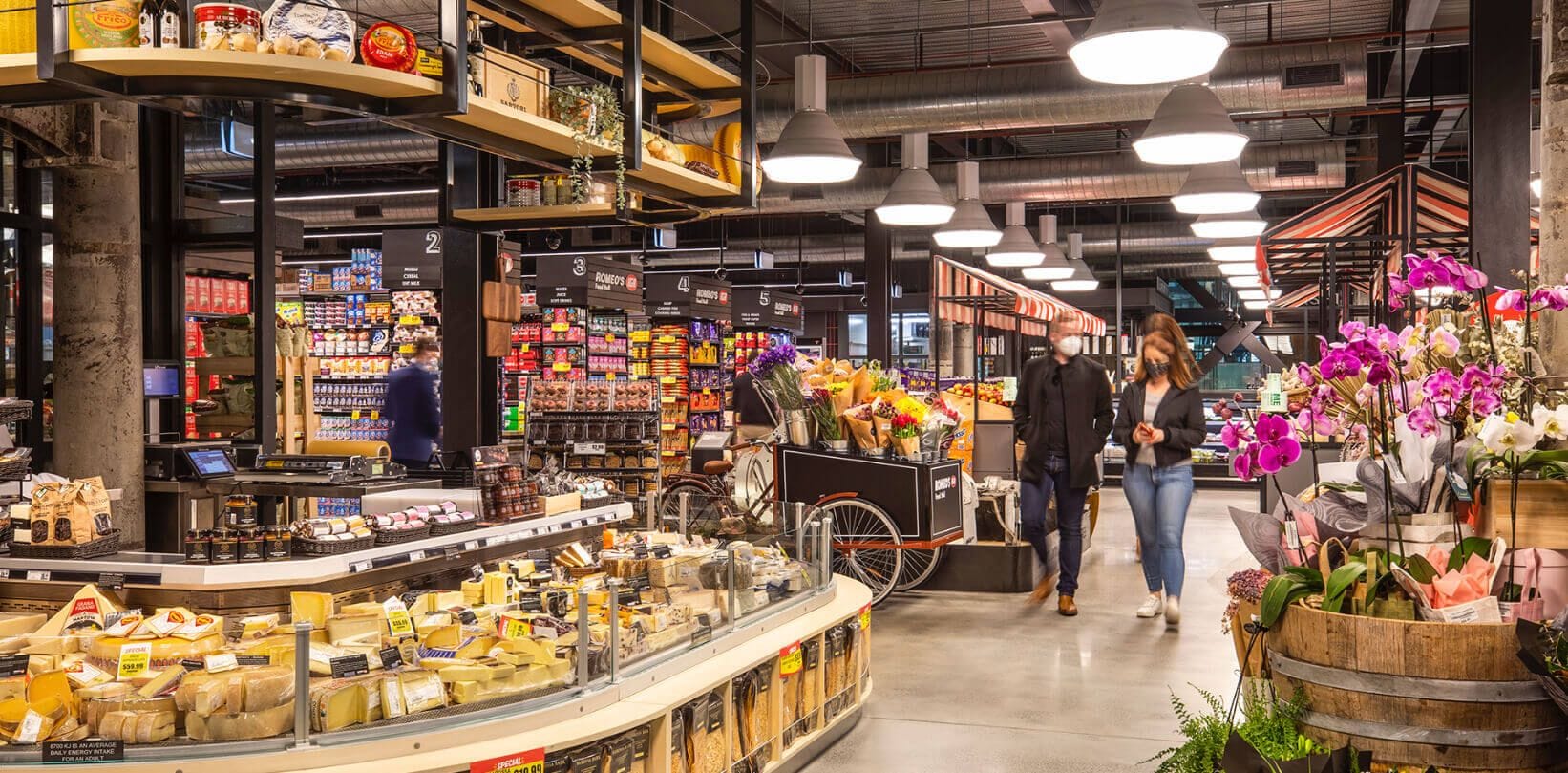
Food & Staples Retailing
2021 rank: 43
Market Cap: $4.08b
FY22 revenue: $15.16b
FY22 profit: $245.4m
Listed: 2005
CEO: Doug Jones
CEO salary: $1.75m (fixed remuneration)
Hardware and independent supermarket wholesaler Metcash (ASX: MTS) continued to reap the benefits of consumers choosing to proudly support local - a trend that cemented itself in the sector mid-pandemic.
So strong was this trend that it was able to sustain Metcash - which supports retailers including IGA, Foodland, Total Tools, Cellarbrations, Mitre 10, Home Hardware and more - through industry-wide disruptions.
According to newly appointed CEO Doug Jones, who was named as Jeff Adams’ replacement just two days after the 2021 edition of this list was published, Metcash’s supply chain demonstrated flexibility and resilience.
This is despite lockdowns in the early part of FY22, flooding across New South Wales, South Australia and Queensland, and challenges related to Russia’s invasion of Ukraine.
“A strategic investment in inventory, the flexibility of our operations and the outstanding efforts of our people helped our retailers to keep their shelves stocked and continue serving their local communities through these challenges,” said Jones, who officially assumed operational leadership on 11 March.
“A testament to our people and independent retailers is that our focus on keeping shelves stocked did not materially hinder the continued successful execution of our MFuture initiatives,” added the CEO, referring to the company’s strategic plan.
As such, company revenue rose by 5.9 per cent to $15.16 billion, while the underlying profit after tax was up 18.6 per cent at $300 million. This compares to a 2.7 per cent year-on-year rise in statutory profit to $245.4 million.
While growth in the food pillar performed well with EBIT growth of 4.1 per cent, it was a ‘substantial’ 40.7 per cent growth in earnings for Metcash’s hardware segment that had management excited.
This was largely driven by earnings growth in both IHG and Total Tools, buoyed by elevated residential construction activity.
The company saw sales momentum across all pillars continue into this latest financial year, while a long-term supply agreement signed with Australian United Retailers positions the company well moving forward.
That agreement with AUR, which operates 540 independently owned supermarkets including 370 FoodWorks outlets, inks the pair’s relationship for a further five year period.
READ MORE
Market caps are based on the close of trade, 2 December, 2022 This list was prepared with information provided by the ASX.
Never miss a Top Companies update or news story: Sign up to Business News Australia's free news updates
Follow us on Twitter, Facebook, LinkedIn and Instagram
Get our daily business news
Sign up to our free email news updates.

)





)
)
)
)
)

